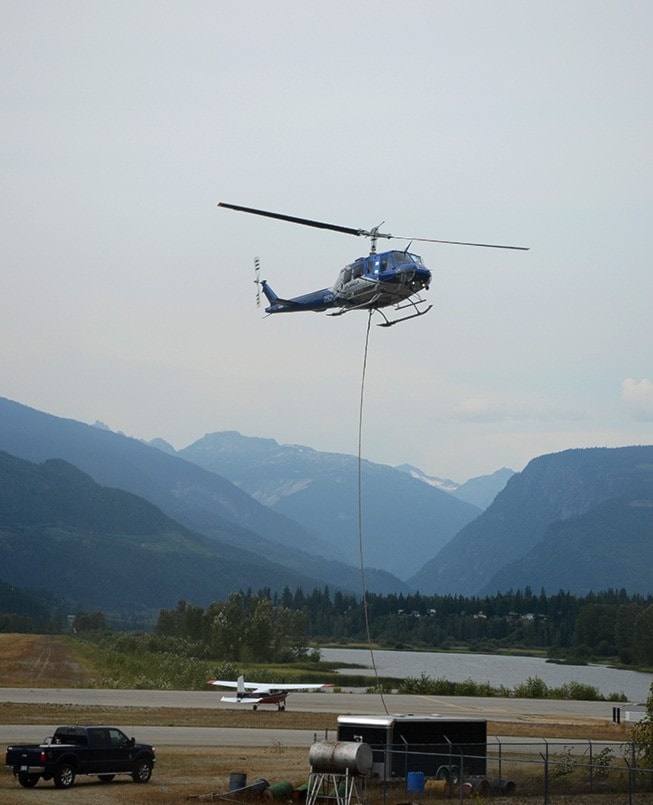Revelstoke City Council has approved $300,000 in funding to extend the Revelstoke Airport runway and add a space for planes to turn around. The idea is to upgrade the airport for larger aircraft, and possibly facilitate scheduled or charter flights.
The decision came at council’s Dec. 10 meeting, where they approved a request from the Columbia Shuswap Regional District for $300,000 from the city’s Tourism Infrastructure Program.
The funding is part of an ongoing upgrade program at the airport, which has to date included the installation of a new navigation system and the extension of one runway area.
The new upgrades will total $360,000 and will include:
— An increase in the length of the runway that will increase its technical length for take-offs and landings as defined by aeronautic regulations
— A ‘turning D,’ which is essentially a cul-de-sac at the end of the runway that allows larger planes to turn around safely without damaging the asphalt runway
A plan provided by the CSRD shows the new ‘turning’ D would be located at the end of the runway closest to Airport Way, extending the runway closer to residences there.
In a letter to the City of Revelstoke, CSRD Environment and Engineering Services Manger Gary Holte said the funding will help pay for a detailed design and also the physical work of removing soil, laying a gravel base and then asphalt and line markings.
The Revelstoke Airport is operated by the Columbia Shuswap Regional District. Airport managers are also planning to implement improved de-icing and fuelling infrastructure. The existing fuel pumps are relatively slow.
At an airport committee meeting this fall, CSRD representatives said improving the speed and capacity of the pumps could attract more air traffic, such as large firefighting tankers that require quick fuelling. This will generate more income for the facility because the airport takes a cut of fuel sales.
